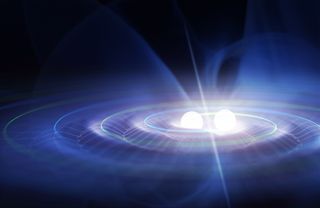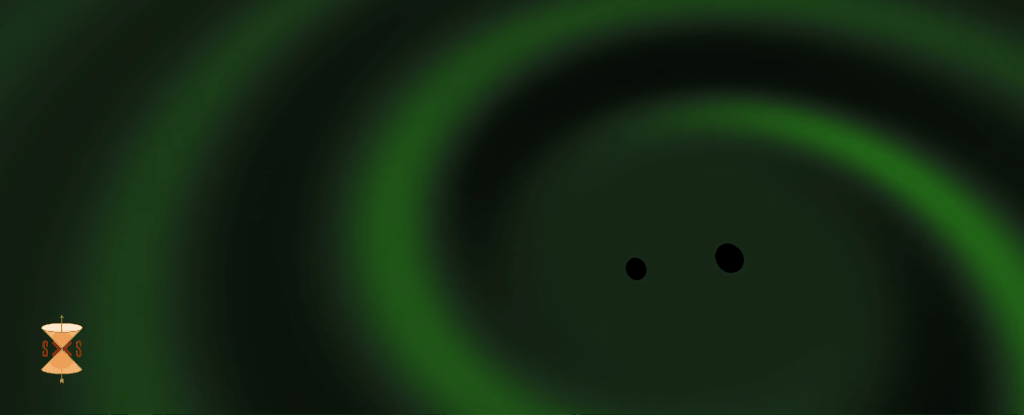Unpeeling the Mysteries of Nature
"We're excited about this because ... it shows that we can start doing this more precise test and start to understand black holes in a deeper sense."
"We all expect general relativity to be correct, but this is the first time we have confirmed it in this way. This is the first experimental measurement that succeeds in directly testing the no-hair theorem."
"What we've done in this study is go back to the data from the first detection of gravitational waves ... and we reanalyzed it to look for a different kind of 'ringing' that has been all but ignored in previous analyses, and we were able to identify it."
"We were very surprised by this because the common wisdom was that this should not work. We were ecstatic."
Maximiliano Isi, NASA Einstein fellow, Kavil Institute for Astrophysics and Space Research, Massachusetts Institute of Technology
 |
| Image: © Shutterstock) |
Published just a few days ago in Physical Review Letters, a study led by an MIT researcher in tandem with colleagues, managed to decipher the 'ringing' of an infant black hole, producing gravitational waves in a manner reminiscent of a bell producing sound. This permitted the researchers to predict the mass and spin of the black hole, an advance in understanding the phenomena of evolving matter and its gravitational impact in a way never before realized, and running counter to all expectations of success.
When two black holes collided they produced a new black hole whose waves resulting from the violent collision had been detected in 2017; while isolating the ringing from the baby black hole, the scientists have recognized a new method of studying the mysterious objects whose celebrated gravitational pull is so robust even light is incapable of escaping, held fast to the dark interior.
The research team headed by Dr. Isi in collaboration with a five-person team included the study co-author Matthew Giesler of the California Institute of Technology. Support was given to the Albert Einstein theory about gravity, now a century old, when the research team was enabled by their observation and its startling result, to demonstrate that ringing of gravitational waves can be utilized in the prediction of mass and spin of black holes.
Dr. Einstein theorized the existence of gravitational waves, how they might be useful in finding the composition of the objects that create them. His original theory of general relativity explains how it is that space, time, matter and energy interact in various ways. Black holes are "hairless", a theoretical term used by scientists to indicate a black hole has mass, spin and electrical charge but no other characteristics; it was the scientists' discovery of the ringing that supported that theory.
/cdn.vox-cdn.com/uploads/chorus_image/image/62616345/GW170104a_close_up_spinning_black_holes.0.jpg) |
Data was derived from LIGO, the Laser Interferometer Gravitational-Wave-Observatory, a scientific collaboration led by MIT and Caltech, including the participation of global institutions. In 2015 the organization first discovered gravitational waves resulting from the collision of the two black holes. A chirping sound was heard when the waves were translated into sound.
It was the focus on the last few milliseconds of the "chirp" that led the researchers to isolate waves specific to the newly-created black hole from the much more robust waves produced by the collision, allowing them to identify a specific "tone" of the ringing, in turn permitting the accurate prediction of the black hole's mass and spin.
This revelation represented a hitherto-unattainable goal that evaded scientists, to the point it was considered that making the breakthrough would demand technology that would only be developed some time in the next several decades. This new discovery has clearly resulted in an acceleration of the process, advancing the science enormously.

Dr. Isi enthuses over the opportunity to witness what the scientific community can construct of this new method of studying black holes at a time when new black hole collisions are being detected every week. "The dark universe", that surrounds us is on the cusp, it would seem, of becoming more explicable, opening the potential in identification and study of waves from mystifying astrophysical objects such as wormholes.
"This is very exciting. We're going to be learning all types of things. It's a good time to be a gravitational scientist", the astronomer enthused, thinking of future revelations that will bring the secrets of our encircling, universal environment and nature's bewitching blueprint for existence all the more closer to human understanding even in the face of a vast universe reluctant to reveal all the hidden details of its evolving and often puzzling realities.
 |
| Scientists have obtained the first image of a black hole, using Event Horizon Telescope observations of the center of the galaxy M87. The image shows a bright ring formed as light bends in the intense gravity around a black hole that is 6.5 billion times more massive than the Sun. This long-sought image provides the strongest evidence to date for the existence of supermassive black holes and opens a new window onto the study of black holes, their event horizons, and gravity. Credit: Event Horizon Telescope Collaboration |
Labels: Black Holes, Nature, Research, Science, Universe

0 Comments:
Post a Comment
<< Home